Hello everyone!
After visiting the Zwinger architectural complex, my friends and I took a quick walk around its surroundings, i.e. the old historic part of Dresden. August II the Strong (elector of Saxony and king of Poland) also contributed to the creation and development of this part of the city. Although the architecture of the buildings comes from different periods, they have something in common. The buildings were damaged to varying degrees during the Second World War and rebuilt after it.
My knowledge about the history of Dresden and the buildings located there comes from the Internet, so if I am wrong in the text, please correct me in the comment.
Witam wszystkich!
Po zwiedzeniu zespołu architektonicznego Zwinger wraz z kolegami zrobiliśmy szybki spacer po jego okolicy, czyli starej zabytkowej części Drezna. Do powstania i rozwoju tej części miasta przyczynił się również August II Mocny (elektor Saksonii i król Polski). Chociaż architektura budynków pochodzi z różnych okresów to ma ze sobą coś wspólnego. Budynki zostały w różnym stopniu zniszczone podczas drugiej wojny światowej i odbudowane po niej.
Moja wiedza na temat historii Drezna oraz znajdujących się tam budowli pochodzi z internetu, więc gdybym się pomylił w tekście to proszę mnie poprawić w komentarzu.
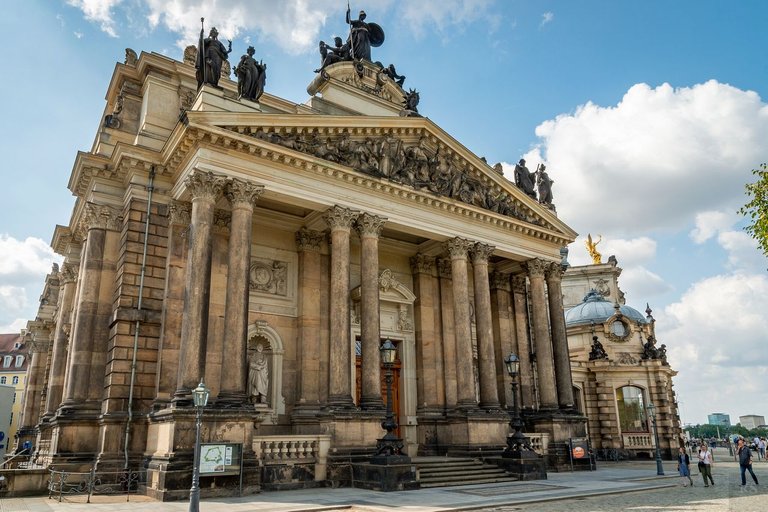
The Lipsius building where the art gallery is located.
Budynek Lipsius w którym znajduje się galeria sztuki.
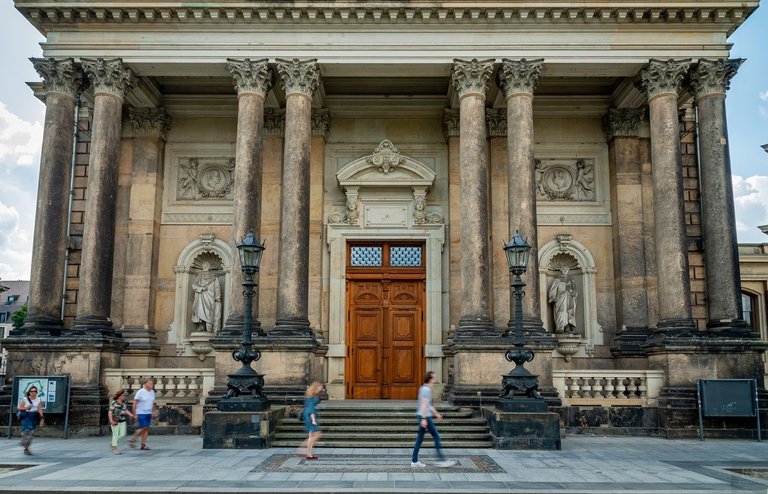
The building itself is located on Brühl's Terraces (German: Brühlsche Terrasse).
Sam budynek znajduje się na Tarasach Brühla (niem. Brühlsche Terrasse).
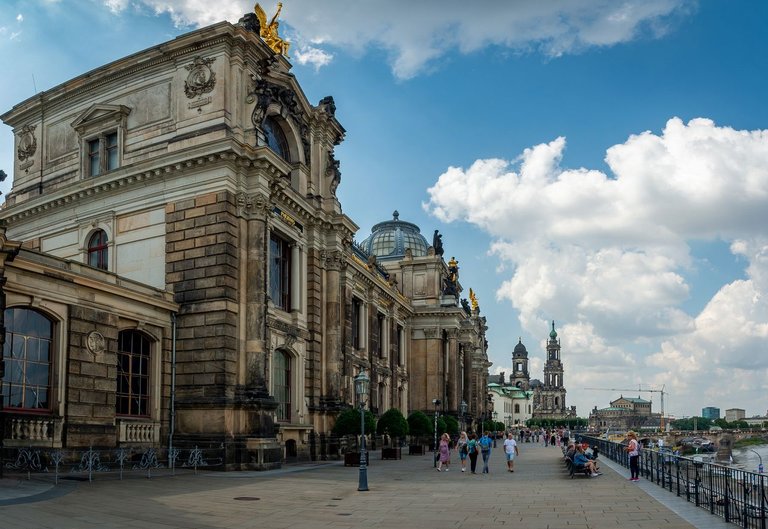
Brühl's Terraces is a walking and viewing promenade on the Elbe River.
Tarasy Brühla to promenada spacerowo-widokowa nad rzeką Łabą.
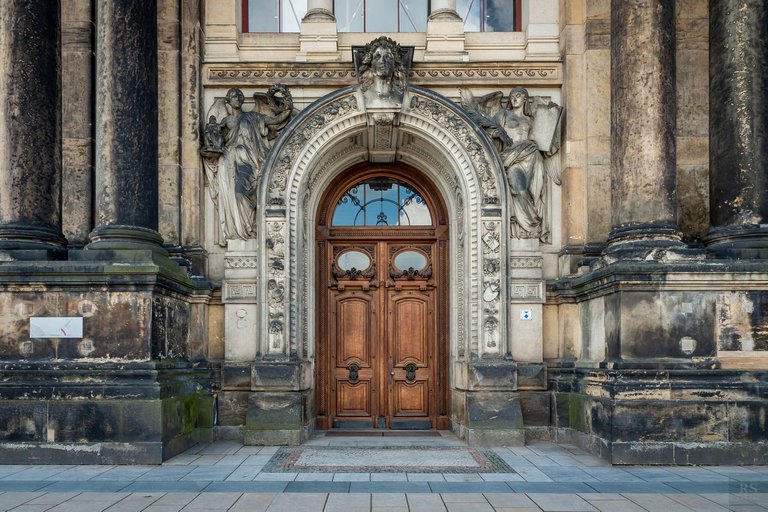
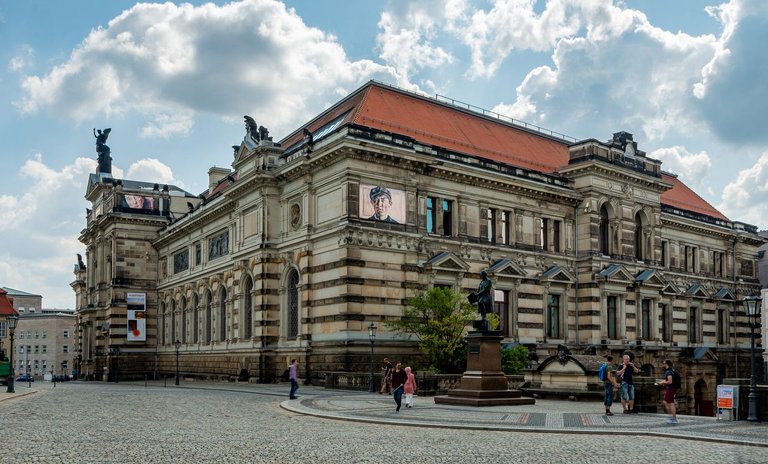
Albertinum (art museum) on the already mentioned promenade.
Albertinum (muzeum sztuki) na wspomnianej już promenadzie.
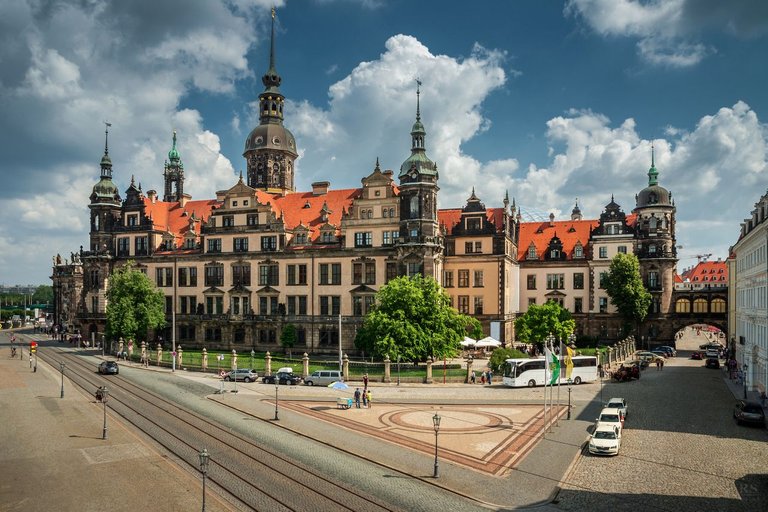
Dresden Castle - residence of the electors (1547–1806) and kings (1806–1918) of Saxony. its origins date back to the 12th century. Photo taken from the Zwinger walls.
Zamek Drezdeński - rezydencja elektorów (1547–1806) i królów (1806–1918) Saksonii. jego początki sięgają XII wieku. Zdjęcie zrobione z murów Zwinger.

Next to the Zwinger there is the Theater Square, with the Semperoper opera building on it.
Obok Zwinger znajduje się Plac Teatralny, a na nim budynek opery Semperoper.
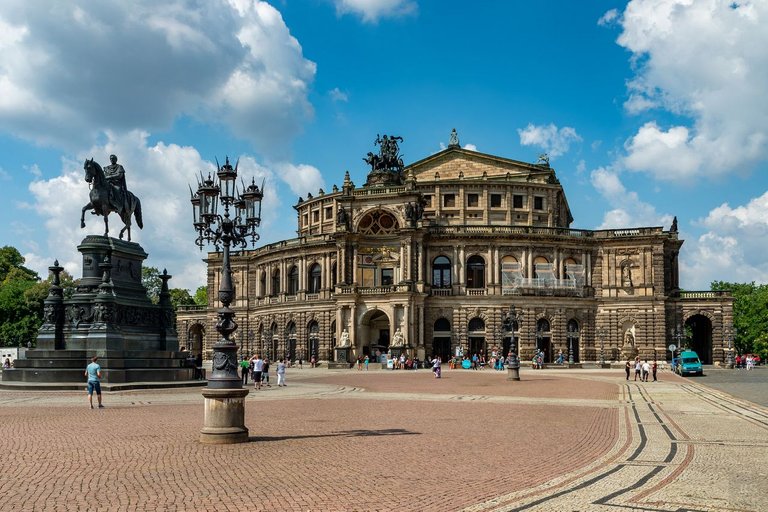
In front of the opera building on the square there is also an equestrian statue of King Jan Wettyn.
Przed budynkiem opery na placu jest także konny pomnik króla Jana Wettyna.
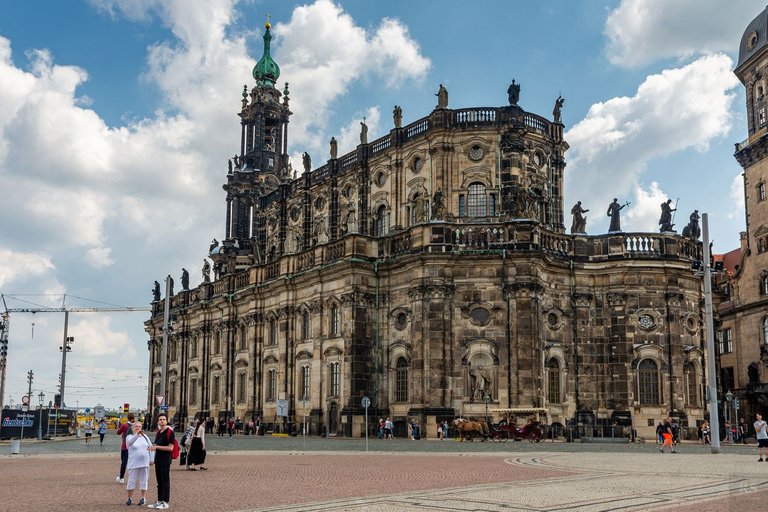
However, when we turn our backs to the opera, we will see the Holy Trinity Cathedral in Dresden.
Natomiast, kiedy staniemy tyłem do opery zobaczymy Katedrę Świętej Trójcy w Dreźnie.
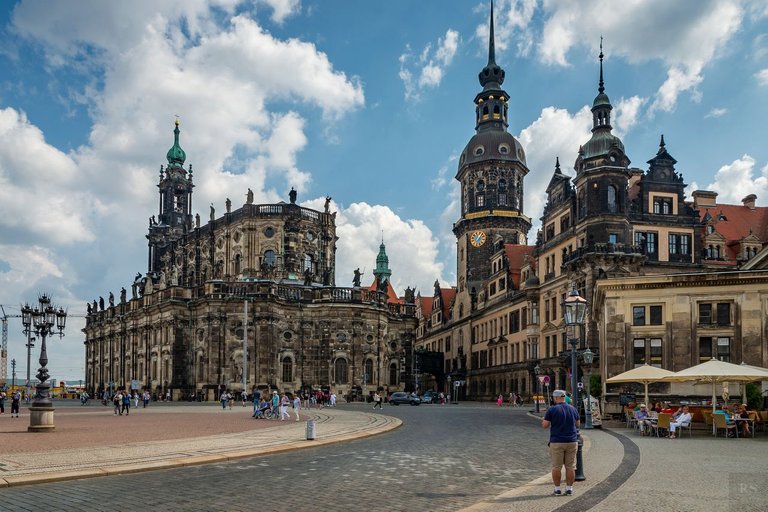
Before us is a view of the already mentioned buildings of the cathedral and the castle.
Przed nami widok na wspomniane już budynki katedry i zamku.
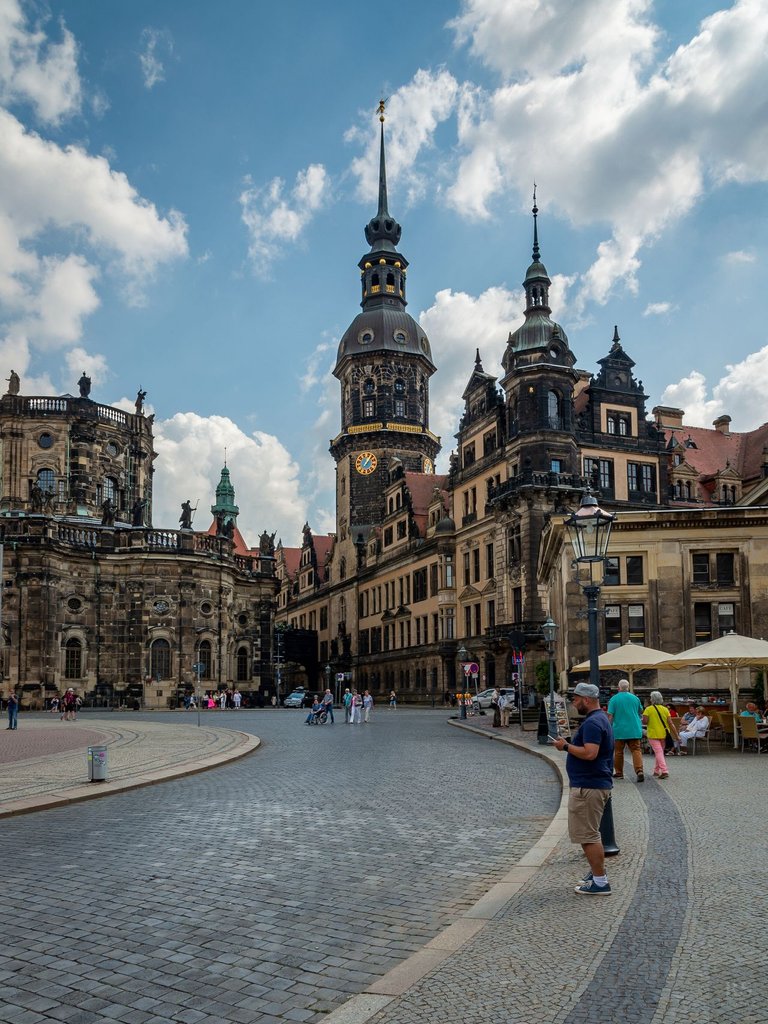 | 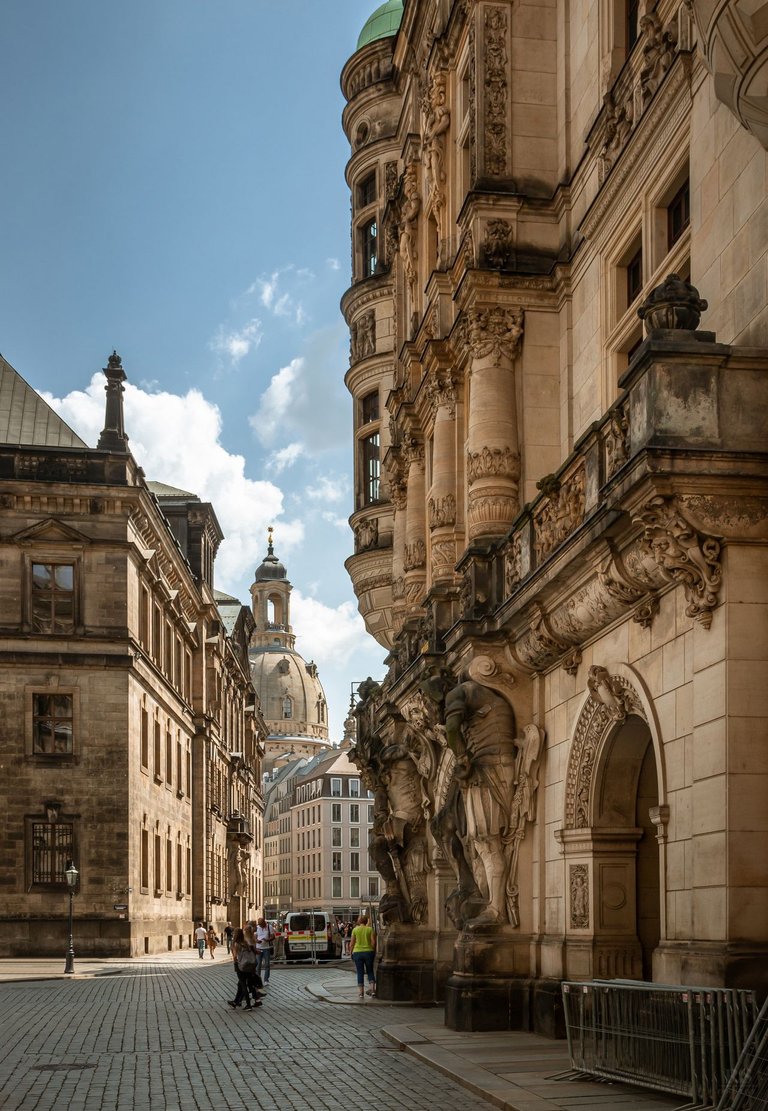 |
|---|
Going further along the street between the cathedral and the castle, you will reach the castle square.
Idąc dalej ulicą pomiędzy katedrą a zamkiem trafimy na plac zamkowy.

The Georgentor building on the castle square.
Budynek Georgentor na placu zamkowym.
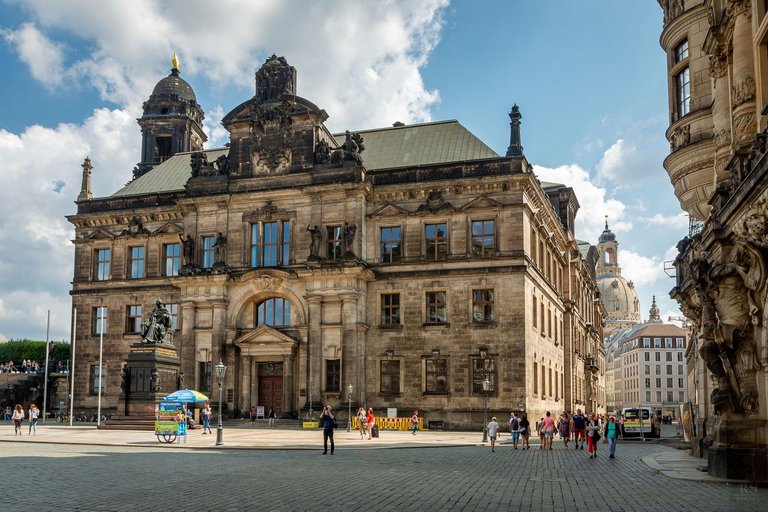
Seat of the Higher Regional Court of Dresden and the State Office for the Preservation of Monuments of Saxony.
Siedziba Wyższego Sądu Okręgowego w Dreźnie i Krajowego Urzędu Ochrony Zabytków Saksonii.
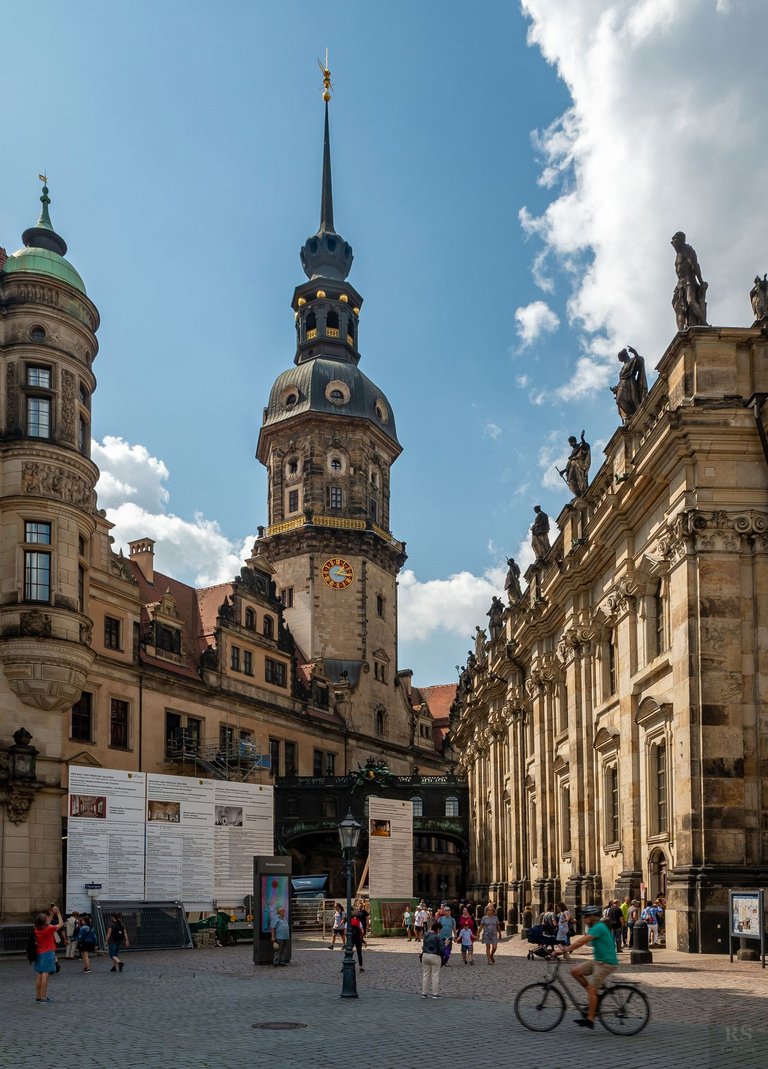 | 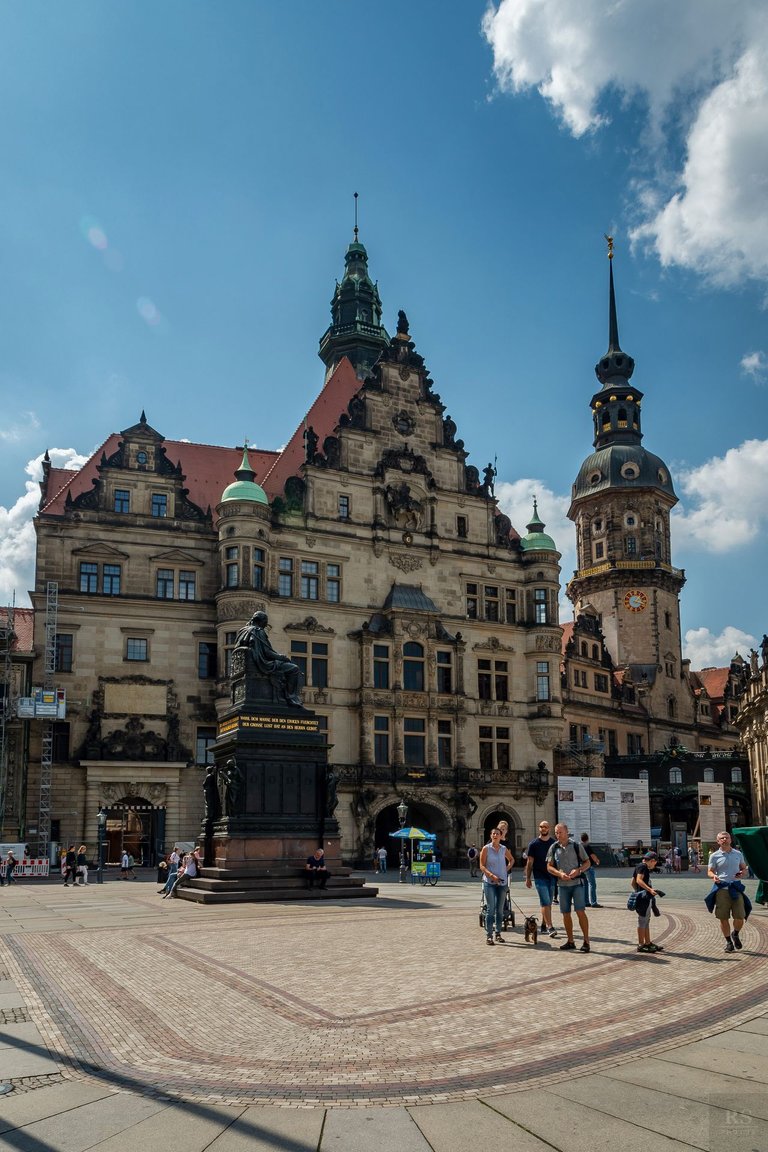 |
|---|
Kolejne zdjęcia z placu i widocznej tam architektury.
Kolejne zdjęcia z placu i widocznej tam architektury.

Fragment of the building of the Academy of Fine Arts in Dresden.
Fragment budynku Akademii Sztuk Pięknych w Dreźnie.
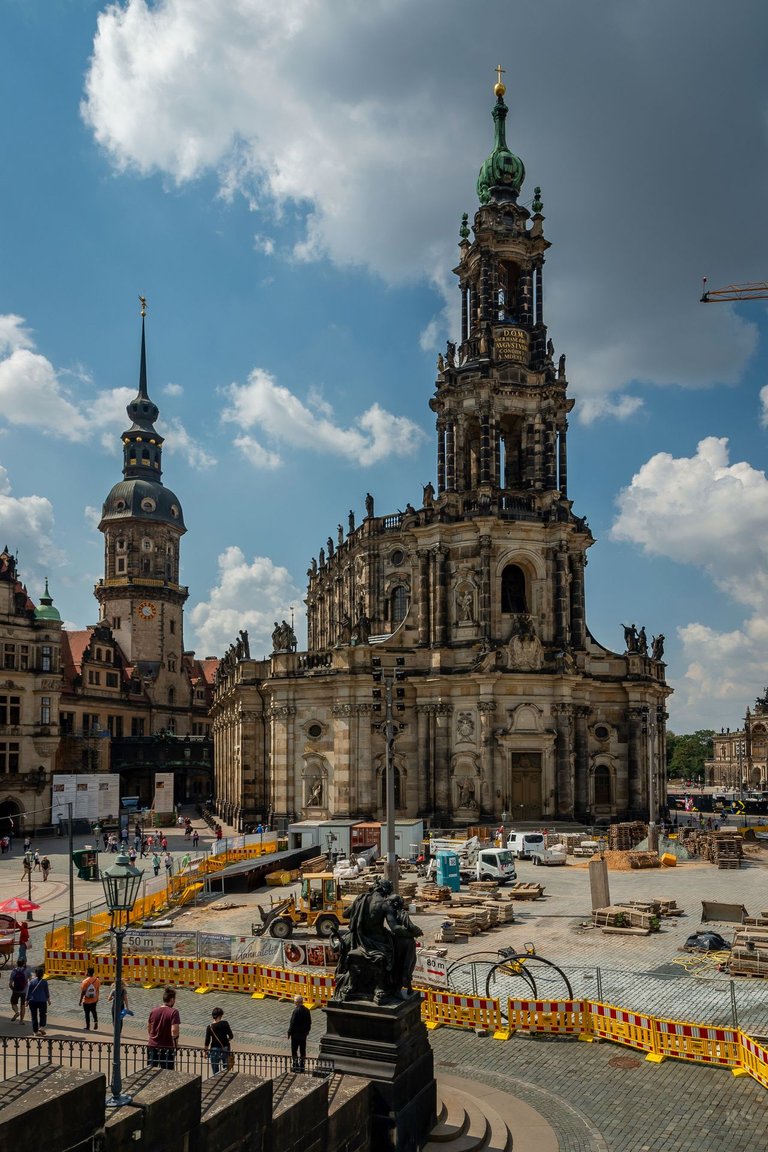 | 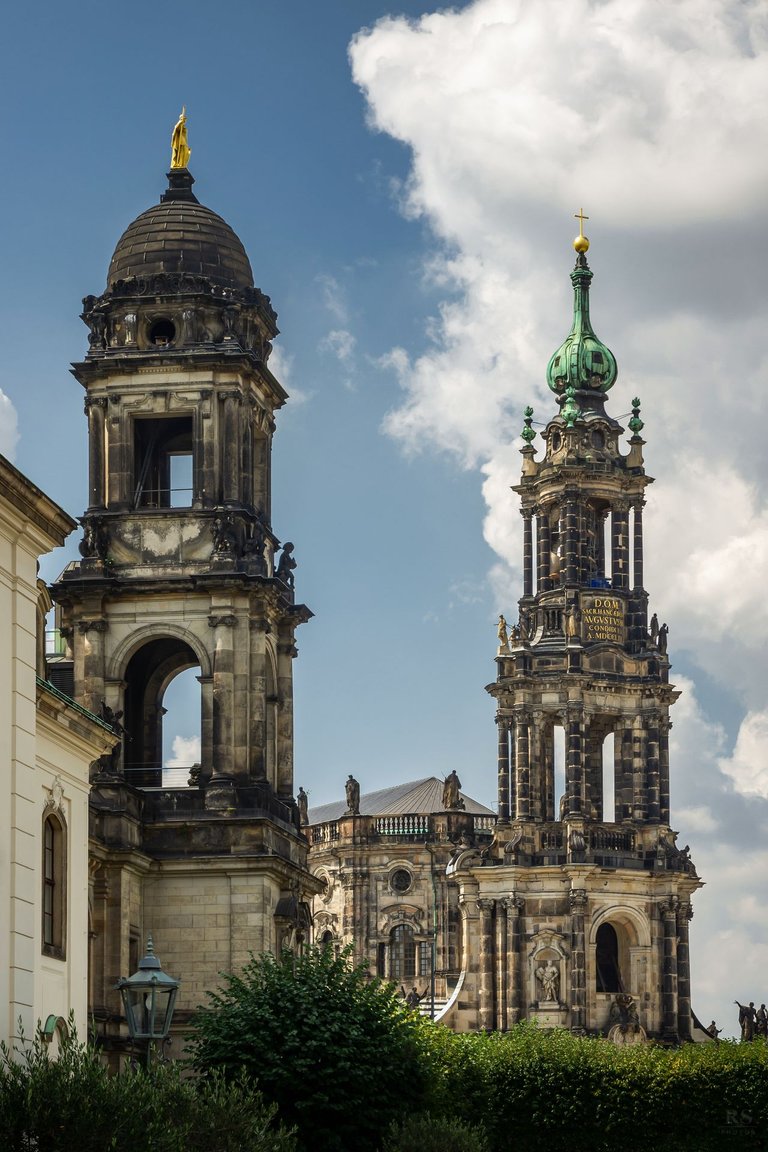 |
|---|
The photo on the left shows the construction site in front of the Holy Trinity Cathedral.
Na zdjęciu po lewej widać plac budowy przed Katedrą Świętej Trójcy.
Thanks for your visit and best regards
Dzięki za wizytę i pozdrawiam
All photos are my own.
Camera: Pentax K-5II
Lens: Pentax HD DA 16-85
Editing: Lightroom
